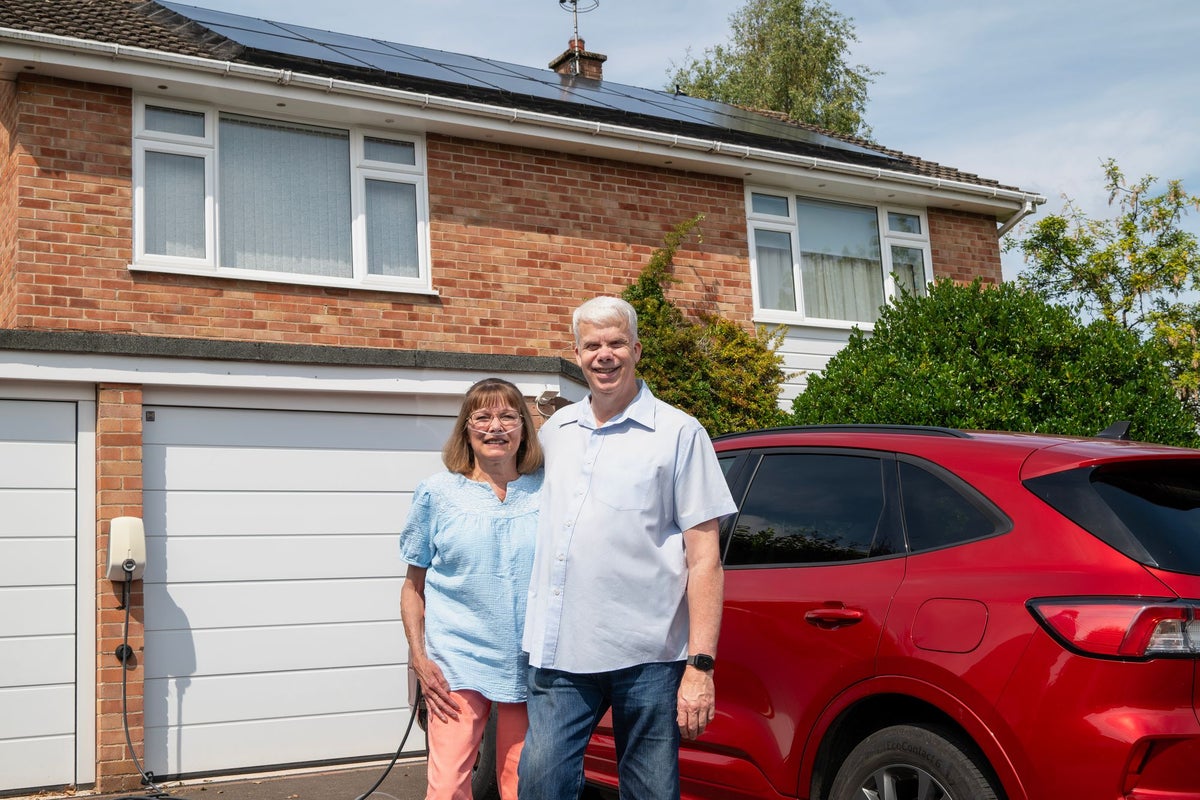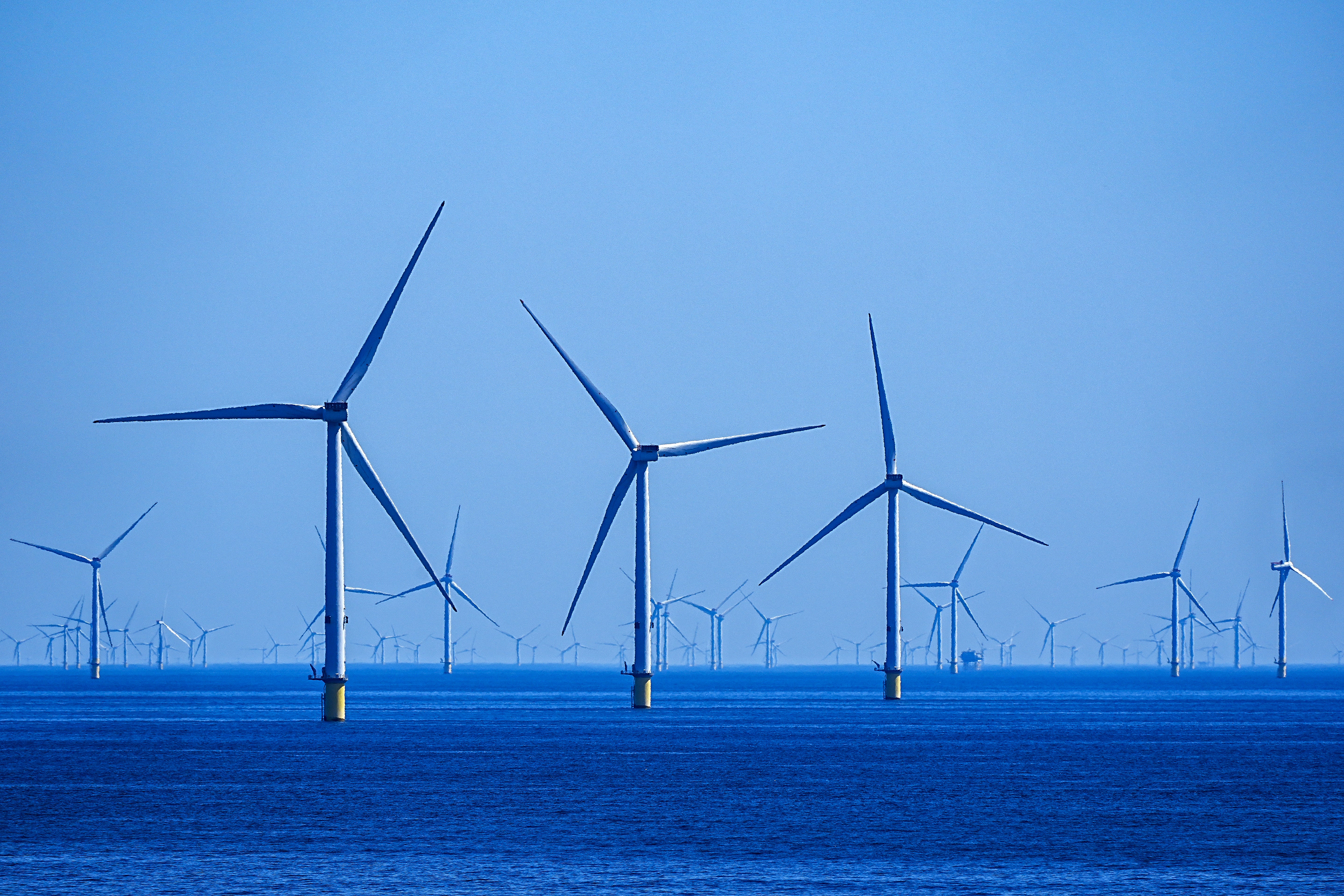
When Malcolm Douglas-Kellie and his wife Jackie first considered whether solar panels are worth it, they were put off by the cost of solar.
One firm in 2019 quoted them £24,000 for a large array of panels and a battery. Energy prices were lower back then, so they shelved the project.
But now their new solar array has slashed their energy bills by two thirds and it provides a unique benefit for Jackie.
“I was born with a heart condition,” Jackie said, adding that she had an operation on her arteries as a teenager. She has needed concentrated oxygen as she has gotten older, which she gets from a concentrator when power is available, and bottled gas otherwise.
If the power goes off, an alarm sounds to alert her, and it means that Malcolm has to go and get bottled gas for her to maintain her supply of oxygen. This often happens at night, disturbing their sleep.
But their new solar panels now deliver 24-hour power since they opted for a battery backup, which can kick in if there is a blip in the mains.
“I don't even notice it, just the battery kicks in and that's it,” said Jackie. “It's just seamless”.
Their home near Nottingham doesn’t have long blackouts, but small cuts in the power still set off the alarm.
Their system cost £18,000 through their power provider Ovo. That’s more than most systems cost, but that’s because they made the most of their roof space to buy a giant 22-panel 9kW array and a large 9kW backup battery.
Malcolm estimates that it should take about nine years to pay for itself.
The battery also allows them to use the grid to take cheap electricity when it's available in winter, when the solar array generates less power.
Because wind farms and solar arrays are intermittent in their power generation, there are times when there is a glut of power available on the grid. Those with the ability to take the power on demand can get cheap electricity, in Malcolm and Jackie’s case, 10 pence per kilowatt hour rather than the grid price of more than 25 pence.
The large size of their solar panel array means that their battery is often charged by lunchtime, and much of the power can be sold to the grid. The couple received a payment for their exported electricity for the three months to June of £360.

They have managed to cut their direct debit for energy from about £300 a month to about £35, although that figure will need to rise soon as they withdraw some of the payments they have received for electricity export. Overall, Malcolm, a former business consultant, says his sums suggest a 65 per cent drop in their energy payments. Most of their outgoings now go on gas, which they use for central heating.
“I'd say it's well worth doing, as long as you can get a decent-sized system,” said Malcolm.
Another boon is the couple’s use of electricity in their cars. They have two plug-in hybrid vehicles, a Ford Kuga and a Ford Tourneo.
These cars and vans have a battery that can be charged from the mains, which offers about 30 miles of range, and also an engine for longer journeys.
They are seen as a good compromise for those who often do long journeys and don’t want to risk not finding a charger when far from home.
They estimate that half the miles they run on their Ford Kuga are electric, much of which will come from their solar panels, saving more money.
A new car charger could allow their cars to benefit from the same cheap charging during peak electricity production.

Their current charger’s software will become defunct in November because its manufacturer has gone bust.
But a new model from HyperVolt will talk to the home’s solar battery to take solar power or cheaper grid energy when available, rather than draining the home battery by default.
After insulating the loft and fitting double and triple glazing, the home now has an energy performance certificate of an A.
Being retired and at home more means they can use more of the electricity and worry less about bills, which is attractive.
“You're not really thinking, oh, turn that off and don't do this. It's just like, if we use a bit more, we use a bit more - the sun's out,” said Malcolm.
They have added an induction hob, which will use solar energy, and is a safe option around Jackie’s oxygen.
Oxygen can cling to clothing, making close naked flames dangerous for users of concentrators and bottled gas.







